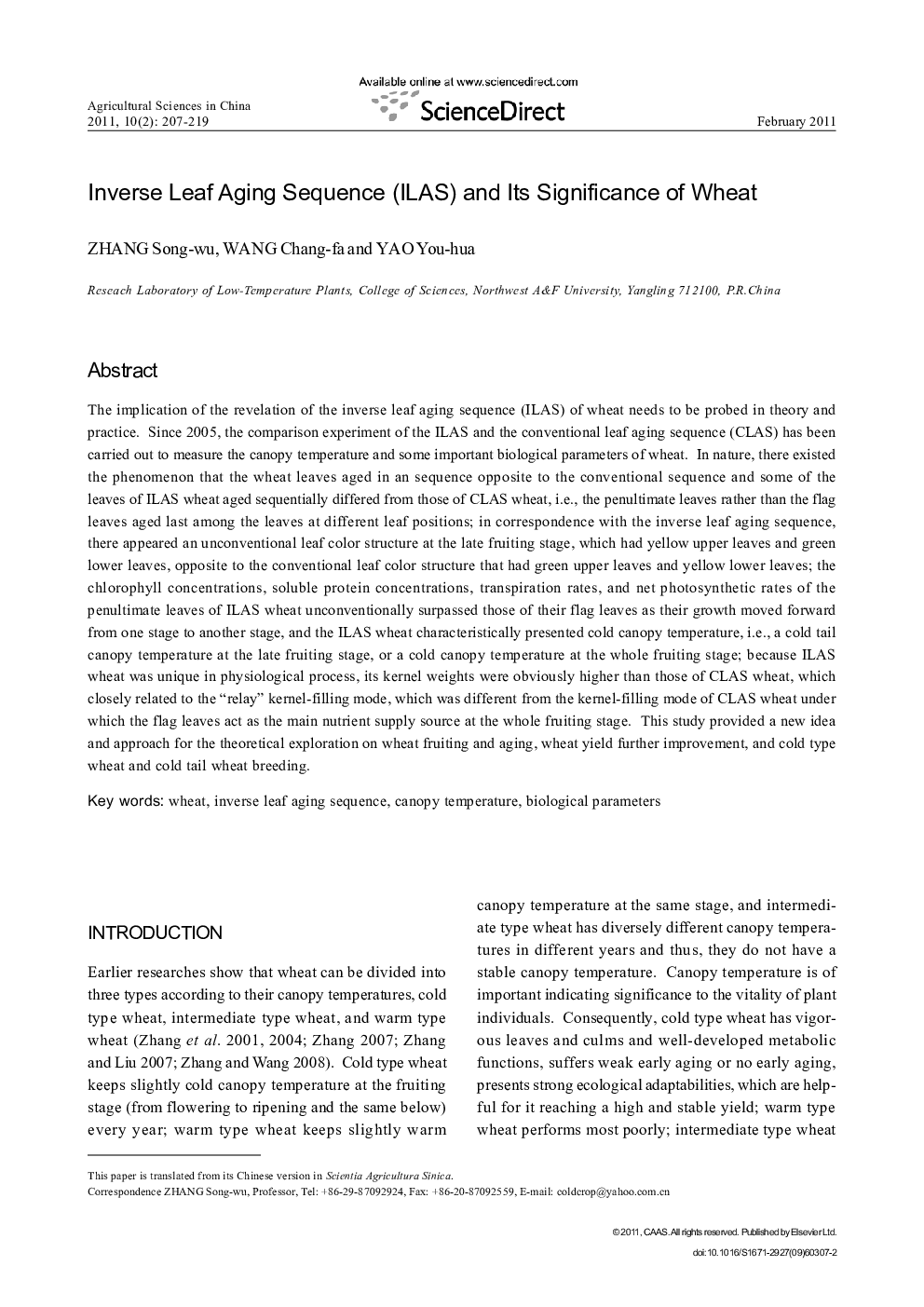| کد مقاله | کد نشریه | سال انتشار | مقاله انگلیسی | نسخه تمام متن |
|---|---|---|---|---|
| 4489901 | 1317743 | 2011 | 13 صفحه PDF | دانلود رایگان |

The implication of the revelation of the inverse leaf aging sequence (ILAS) of wheat needs to be probed in theory and practice. Since 2005, the comparison experiment of the ILAS and the conventional leaf aging sequence (CLAS) has been carried out to measure the canopy temperature and some important biological parameters of wheat. In nature, there existed the phenomenon that the wheat leaves aged in an sequence opposite to the conventional sequence and some of the leaves of ILAS wheat aged sequentially differed from those of CLAS wheat, i.e., the penultimate leaves rather than the flag leaves aged last among the leaves at different leaf positions; in correspondence with the inverse leaf aging sequence, there appeared an unconventional leaf color structure at the late fruiting stage, which had yellow upper leaves and green lower leaves, opposite to the conventional leaf color structure that had green upper leaves and yellow lower leaves; the chlorophyll concentrations, soluble protein concentrations, transpiration rates, and net photosynthetic rates of the penultimate leaves of ILAS wheat unconventionally surpassed those of their flag leaves as their growth moved forward from one stage to another stage, and the ILAS wheat characteristically presented cold canopy temperature, i.e., a cold tail canopy temperature at the late fruiting stage, or a cold canopy temperature at the whole fruiting stage; because ILAS wheat was unique in physiological process, its kernel weights were obviously higher than those of CLAS wheat, which closely related to the “relay” kernel-filling mode, which was different from the kernel-filling mode of CLAS wheat under which the flag leaves act as the main nutrient supply source at the whole fruiting stage. This study provided a new idea and approach for the theoretical exploration on wheat fruiting and aging, wheat yield further improvement, and cold type wheat and cold tail wheat breeding.
Journal: Agricultural Sciences in China - Volume 10, Issue 2, February 2011, Pages 207-219